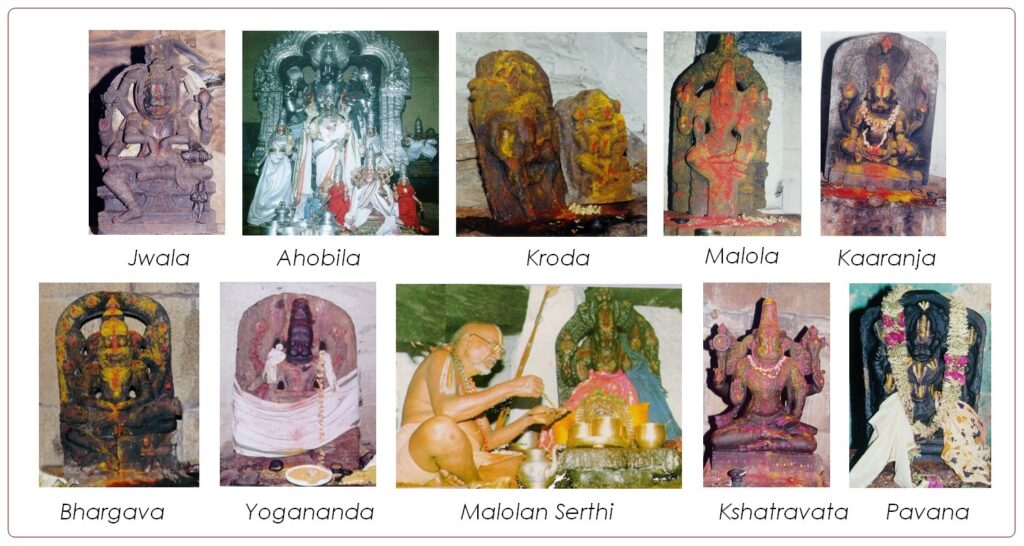Lord Narasimha is one of the dasa avatars of Sri Maha Vishnu. However, the Narasimha avatar has a unique significance, especially in South India. There are many Narasimha temples throughout Telugu states. Nine significant Temples (Nava Narasimha Temples) Among them, nine significant temples depict different forms of the Lord. In addition to them, there are Read More
Tag: Ahobilam
Ahobilam is a town and holy site in the Allagadda mandal of Nandyal district in the Indian state of Andhra Pradesh
Spiritual Guide – Nava Narasimhas (9 Forms of Lord Narasimha)
Nava Narasimhas – Ahobilam In Ahobilam, Narasimha Swami is incarnated in nine forms. In Brahmanda Purana, the nine Narasimhas were described as Jwala Ahobila Malola Kroda Karanja Bhargava Yogananda Kshatravata Pavana Nava Moorthayaha Except for two or three temples, all the other temples had to be visited only on footway through the hills. The Nine Read More

